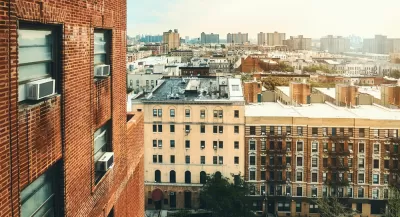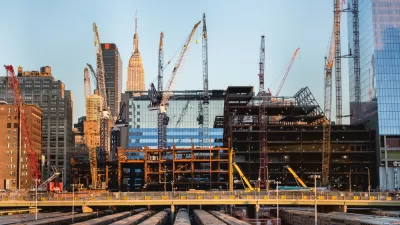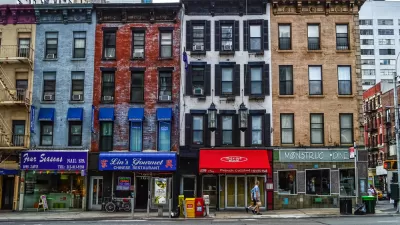With every new mayoral administration in New York City comes a new plan for addressing the city’s housing affordability crisis. Now it’s Mayor Adams’s turn.

New York City Mayor Eric Adams released a new housing plan that targets housing affordability and homelessness with five major initiatives, according to an article by Mathew Haag, Dana Rubinstein, and Andy Newman for the New York Times.
The five initiatives outlines in “Housing Our Neighbors: A Blueprint for Housing and Homelessness”:
- Transform New York City Housing Authority (NYCHA)
- Address Homelessness and Housing Instability
- Create and Preserve Affordable Housing
- Improve the Health and Safety of New Yorkers
- Reduce Administrative Burden
The New York Times article points out a conspicuous lack of detail for each of those five initiatives: “Some are not guaranteed, such as rewriting the city’s zoning laws to allow for larger affordable-housing developments and expanding the number of one-bedroom units for single adults.” The plan also lacks a specific goal for how many people would stand to gain new access to housing through the plan.
The mayor has already supported new funding for housing in the city, however, reflecting the priority of the issue for the Adams administration: “The plan was released the day after the City Council approved a new city budget, negotiated with the mayor, that will add $5 billion over 10 years for the city’s affordable housing programs, bringing its total investment in affordable housing to $22 billion over that period. That is a historically high number.”
The Adams administration also recently announced a new “City of Yes” zoning reform proposal, designed to support housing and business opportunities while also promoting sustainability measures in the city’s building stock.
The “Housing Our Neighbors” blueprint follows in the footsteps of other major mayoral initiatives to address housing affordability. Adams’s predecessor Mayor Bill de Blasio proposed the “Housing New York” plan to create or protect 200,000 affordable units.
FULL STORY: Adams Announces Plan to Fix New York City’s Growing Housing Crisis

Alabama: Trump Terminates Settlements for Black Communities Harmed By Raw Sewage
Trump deemed the landmark civil rights agreement “illegal DEI and environmental justice policy.”

Study: Maui’s Plan to Convert Vacation Rentals to Long-Term Housing Could Cause Nearly $1 Billion Economic Loss
The plan would reduce visitor accommodation by 25% resulting in 1,900 jobs lost.

Why Should We Subsidize Public Transportation?
Many public transit agencies face financial stress due to rising costs, declining fare revenue, and declining subsidies. Transit advocates must provide a strong business case for increasing public transit funding.

Paris Bike Boom Leads to Steep Drop in Air Pollution
The French city’s air quality has improved dramatically in the past 20 years, coinciding with a growth in cycling.

Why Housing Costs More to Build in California Than in Texas
Hard costs like labor and materials combined with ‘soft’ costs such as permitting make building in the San Francisco Bay Area almost three times as costly as in Texas cities.

San Diego County Sees a Rise in Urban Coyotes
San Diego County experiences a rise in urban coyotes, as sightings become prevalent throughout its urban neighbourhoods and surrounding areas.
Urban Design for Planners 1: Software Tools
This six-course series explores essential urban design concepts using open source software and equips planners with the tools they need to participate fully in the urban design process.
Planning for Universal Design
Learn the tools for implementing Universal Design in planning regulations.
Smith Gee Studio
Alamo Area Metropolitan Planning Organization
City of Santa Clarita
Institute for Housing and Urban Development Studies (IHS)
City of Grandview
Harvard GSD Executive Education
Toledo-Lucas County Plan Commissions
Salt Lake City
NYU Wagner Graduate School of Public Service





























